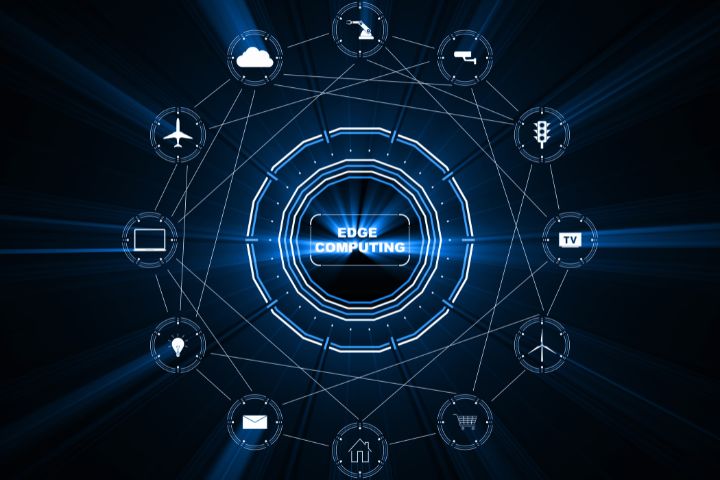5G And Edge Computing: Opportunities And Doubts

5G and edge computing – The first is no longer a name: it is spreading among technicians, professionals, and our daily lives. How many of us have received notification from our providers that our smartphone is not suitable for surfing the latest generation networks, which are, in fact, the 5G ones, perhaps with the relative offer of a more performing device? Less well-known but equally useful, indeed, now indispensable, is edge computing.
A small explanation, just for “dummies”: edge computing moves data processing from the cloud to the edge, i.e., to the edge, close to the end user. In practice, it is no longer necessary to use all the bandwidth of a network to send data, often very heavy, to the cloud. With an English pun that gets lost in Italian, the experts say that we are practically moving from data centers to data centers …
Resilience
This technology allows a significant reduction in data traffic and the phenomenon that we have come to know also for psychology after the pandemic, which is called resilience: if the connection is interrupted, in fact, edge computing manages to cope without losing all the data. This means controlling everything and making the most appropriate decisions without waiting for answers that rain… from the “clouds.” Without this model, the main applications of the Internet of Things would be impossible, precisely because of its ability to process the so-called “big data” locally and send a kind of “summary” to the cloud. But it is also essential to give connected devices real-time responses – a prerogative that is indispensable precisely for 5G.
From 4G to 5G
As 4G hit the market, its main strengths seemed to be its increased bandwidth and speed. Still, its use has mainly been viewed from applications such as video streaming. 5G is a completely different technology and network, built on virtual rather than physical infrastructure. Thanks to its software-defined core, and its use of shorter frequencies between 30 GHz and 300 GHz, 5G changes the way mobile services are delivered: it can deliver up to 10 gigabytes per second of speed, it can connect one million devices per square kilometer and offers a one-millisecond latency rate, a remarkable figure when compared to 4 G’s average of 40-60 milliseconds.
5G and security
There are so many market segments where 5G and edge computing can be used with excellent results and benefits for the user. Let’s start right with our “backyard” safety. It is intuitive to limit ourselves to just one example among the many that could be done that an IP camera that works as an edge server, instead of sending data back and forth to the cloud, can directly perform the processing and, if detected, any anomaly, the alarm that starts is really immediate. Only those data that are too complex for the single-edge device to process will go to the cloud, which certainly has more processing power.
Smart production
Another fundamental sector is the industrial IoT. The so-called “intelligent production” consists of the use of devices that, in order to be truly “smart,” cannot afford downtime. The prediction of when the machines are about to fail depends precisely on the processing of the sensor data, which must have an extremely fast connection channel. Only a technology like 5G can provide speed, scalability, and ultra-low latency. The future factory will be flexible, wireless, and constantly monitored. Furthermore, as required in the IoT industry, it can manage a large amount of data.
Health
Edge computing and 5G also offer new opportunities in the healthcare industry. The processing of data “near the hospital,” for example, allows doctors to learn about anomalies or irregularities in patients’ health immediately. Furthermore, patient information does not pass to the cloud, thus reducing privacy problems, which are not negligible in such a delicate sector.
Smart transport
The benefits of edge computing and 5G are perhaps more evident than in intelligent transportation. The obvious applications can be different. For example, LiDAR sensors and cameras transmit data to the advanced driver assistance system inside a vehicle, which must make decisions in a split second (or even less). This will be essential in so-called self-driving vehicles, no longer in the future, but a reality already consolidated in the public transport networks of various European cities. And then, there is traffic management: data from cameras and other sensors can be processed on edge to examine the situation in real-time and provide immediate answers, such as closing congested roads and proposing alternative routes.
Smart home
Let’s finish this short and certainly not exhaustive rundown with the smart home: Here, too, all the data generated by smart devices now goes to the cloud, but the trend is to move it to the edge, especially for what concerns security cameras and smart speakers. There are indeed other network options (satellite, RFID, Ethernet), but none of these, according to experts, allow the speed, bandwidth, and reduction of consumption like 5G, which is on the way to becoming the real driving force of the world economy. According to the research agency Juniper Research, within 5 years, the number of connections for industrial IoT will practically double, from 17.7 billion in 2020 to 36.8 billion in 2025. And we’re talking about just one. Albeit vast, of the sectors that, as we have seen, are affected by the “5G revolution”.
Digitization
There is a 5G Action Plan managed by a specific European Commission because the Member States themselves must become the clients in numerous sectors that can benefit from this technology. To stay in our field, urban security, transport management, and emergencies and disasters. Finally, the entire cybersecurity segment affects the public and private sectors. For all these reasons, 5G has entered the sphere of interest not only of the “private” market but also of the public because it is indispensable for digital development, which is now indispensable in all countries of the world.
PNRR and 5G
As for our country, part of the famous PNRR funds must be donated to 5G. The races have started, but the problems are many; in particular, we are far from having that mythical “single network” that should be the backbone for ultra-fast connections throughout Italy. We still have too many so-called “white areas,” areas where it has not been possible to bring the ultra-broadband. One fact is certain: the future is in the sign of communications, the fastest and safest possible. To keep up with the times, it will be essential to invest in 5G … if that’s enough because in the industrial sector we are already thinking about 6G …
Also Read : Because Security Must Be Sustainable


